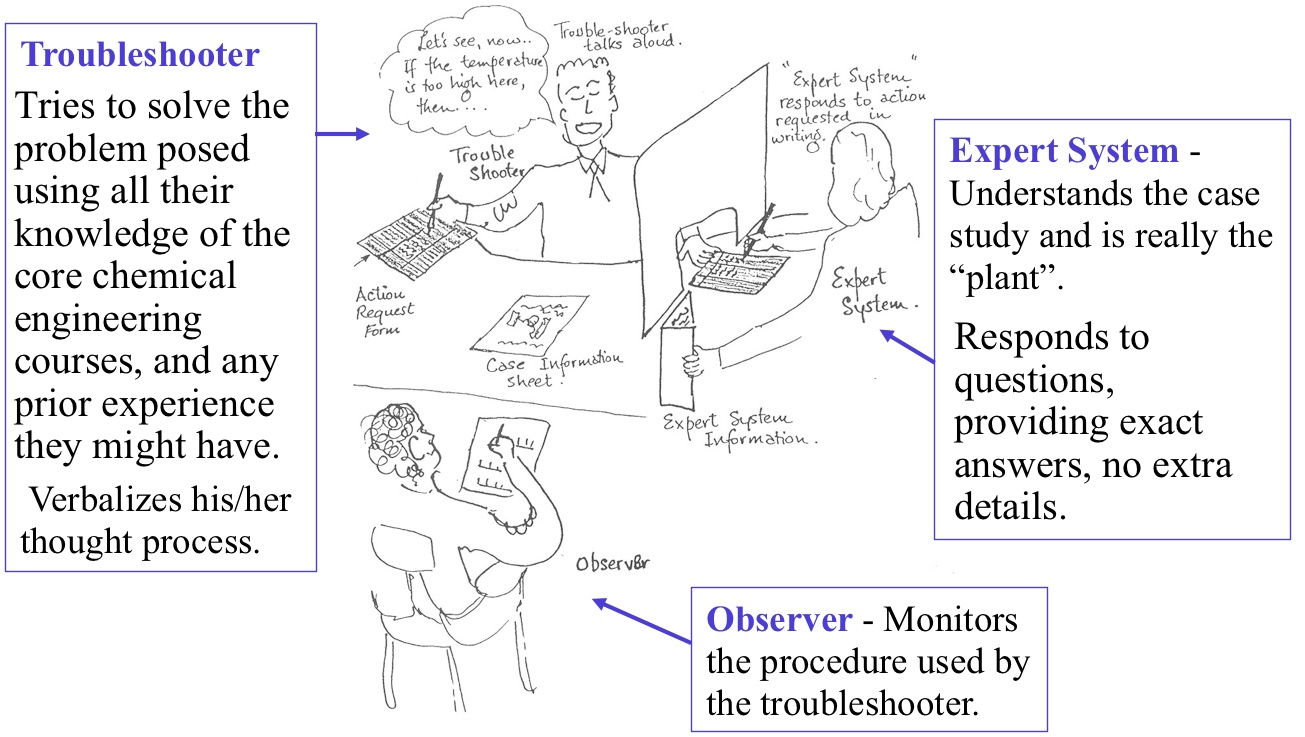Assignment 9 - 2013
The tutorials on Monday are known here at McMaster as The Triads. It was a concept developed by Dr. Don Woods. Several other universities have adopted this model, but it is started here at Mac. Most students write in their reviews that this part of 4N4 was their favourite section; that they suddenly realized how Chemical Engineering comes together.
Each person will be the Troubleshooter, the Expert and the Observer on a different case study (the roles rotate, about 25 minutes per exercise).
Expert System
You will receive a binder at the start of the tutorial, read it over for 20 minutes. You must come to an understanding of the process. You will represent the plant to the troubleshooter. You are the source of all true knowledge.
- When asked questions by the troubleshooter, provide short answers to the exact question the troubleshooter asks. If they ask, "Inspect the instrument" then respond "It's OK" or “It is there”. If they ask what you did, then say "I went out and looked at it." Be tough. Do not offer more information than they asked for.
- Do not elaborate and sometimes the response might be "that is not possible".
- You will discuss the true solution with your 2 colleagues after the exercise.
When you read the description in the binder, try to anticipate the kinds of questions that the Troubleshooter might ask; or experiments or tests that he/she might ask to be performed. Give results of experiments. Do not give explanations. Give correct information but do not be generous.
- Do not mark the stapled sheets in the folder; these folders are reused in future years and cost substantial time and money to prepare.
Troubleshooter
You have a challenging role to play.
You must verbalize your thought process so the observer can track your progress. This is daunting at first, you might be embarrassed about your apparent lack of knowledge, but the purpose is to gain confidence on a system that does not matter, so that one day you can solve systems that do matter. You will also need to write down similar thoughts in the troubleshooting case in the final exam in December.
You can ask for information, data, or plant tests from the Expert to help solve the problem. The questions must only be things that an engineer can feasibly perform on a plant. You cannot ask "What's the problem?" and you cannot say "turn off the reactor" (however you can say, "slowly close the feed to the reactor and tell me what happens to the temperature TC3").
You should aim to come to a point where you propose 2 solutions:
- a short-term solution to fix the problem
- a longer-term solution to permanent fix the problem
Observer
As the Troubleshooter is tackling the problem, your task is to judge his/her progress. Write down bullet points of the questions the troubleshooter is asking the "plant" (expert system). At the end, your written document of neatly written bullet points is essentially a transcript of what happened (like a "black box" in an airplane). You will submit this report for grading.
